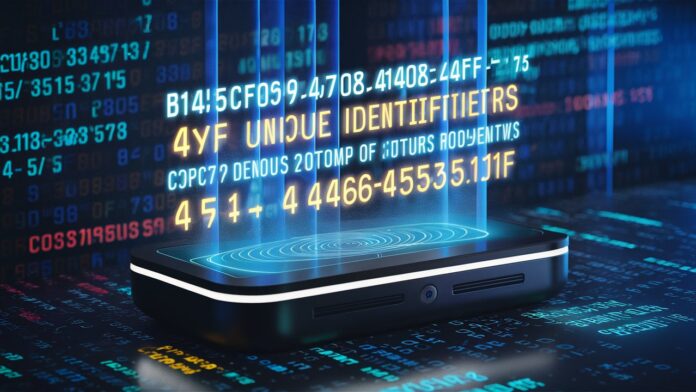Introduction
In the digital age, unique identifiers are the backbone of technology systems. Among them, strings such as b143fcf9-4708-44ff-b82d-446a8f35131f often appear in databases, APIs, applications, and software environments. To the untrained eye, this code may look like a random sequence of letters and numbers, but in reality, it represents something far more important: a Universally Unique Identifier (UUID). These identifiers ensure that every item, user, or transaction in a digital system can be tracked without duplication, conflict, or confusion. This article explores what b143fcf9-4708-44ff-b82d-446a8f35131f means, why such identifiers are used, and how they shape the technology ecosystem we rely on every day.
What Is b143fcf9-4708-44ff-b82d-446a8f35131f?
The string b143fcf9-4708-44ff-b82d-446a8f35131f is an example of a UUID, also known as a GUID (Globally Unique Identifier). UUIDs are 128-bit values typically displayed as hexadecimal strings divided into five groups separated by hyphens. Their design ensures that each identifier is globally unique, meaning no two UUIDs generated will ever be the same, even across different systems or points in time. In practice, this means developers, systems architects, and database managers can rely on them to track items without worrying about accidental duplication. This particular identifier follows the UUID version 4 format, which is generated using random numbers, ensuring high uniqueness.
Why Are Identifiers Like b143fcf9-4708-44ff-b82d-446a8f35131f Important?
Identifiers such as b143fcf9-4708-44ff-b82d-446a8f35131f serve as digital fingerprints in a world where billions of users, files, and transactions interact across networks. Imagine a large e-commerce platform managing millions of orders daily—using sequential IDs could cause overlaps or even security vulnerabilities. Instead, UUIDs provide a way to assign each order a unique identity, reducing the risk of collisions. In distributed systems like cloud services, databases, and microservices, UUIDs act as the glue that keeps everything distinguishable, traceable, and secure. Without them, large-scale applications would struggle with reliability and efficiency.
Applications of b143fcf9-4708-44ff-b82d-446a8f35131f in Technology
The use cases of identifiers like this stretch across numerous industries. In databases, UUIDs ensure each record remains unique without relying on incremental primary keys. In cybersecurity, UUIDs play a vital role in session management, encryption systems, and digital certificates. Even in everyday applications like mobile apps or web platforms, these identifiers track user sessions, shopping carts, and personalized settings. The universality of UUIDs makes them indispensable in both small-scale software and enterprise-grade infrastructure.
How Is b143fcf9-4708-44ff-b82d-446a8f35131f Generated?
UUIDs like b143fcf9-4708-44ff-b82d-446a8f35131f are generated through algorithms designed to guarantee uniqueness. For version 4 UUIDs, randomness is the primary factor—using pseudo-random number generators to create the 128-bit value. In contrast, other versions may rely on time stamps, MAC addresses, or cryptographic hashing. Regardless of the version, the probability of duplication is astronomically low, which is why UUIDs are trusted even in mission-critical systems like financial services, government databases, and healthcare platforms.
Challenges and Considerations
While UUIDs offer immense advantages, they also come with challenges. Because of their length and randomness, UUIDs like b143fcf9-4708-44ff-b82d-446a8f35131f can be harder for humans to read, remember, or debug compared to shorter sequential IDs. Additionally, storing and indexing UUIDs in massive databases may require more space and slightly impact performance. Despite these considerations, the benefits of guaranteed uniqueness and cross-platform reliability far outweigh the limitations, making UUIDs a standard in most industries.
Conclusion
The string b143fcf9-4708-44ff-b82d-446a8f35131f may appear as an ordinary random code, but it reflects the incredible sophistication of digital identifiers that keep our technological systems running smoothly. As a UUID, it embodies uniqueness, scalability, and reliability—qualities that power everything from cloud computing to e-commerce. By understanding what these identifiers mean and how they are used, we gain insight into the invisible foundations of modern technology. In short, UUIDs like this one may not be flashy, but without them, the digital world would be far less organized, secure, and functional.
❓ FAQ (Frequently Asked Questions)
Q1: What does b143fcf9-4708-44ff-b82d-446a8f35131f represent?
It represents a UUID (Universally Unique Identifier), a 128-bit code used in technology systems to ensure uniqueness of records, transactions, or objects.
Q2: Is b143fcf9-4708-44ff-b82d-446a8f35131f random?
Yes, it follows the UUID version 4 format, which is generated randomly to maximize uniqueness and minimize the chance of duplication.
Q3: Where are identifiers like this used?
They are used in databases, APIs, cloud computing, mobile applications, security systems, and any environment where unique digital identity is required.
Q4: Why not use simple sequential numbers instead of UUIDs?
Sequential numbers work in small systems but can cause overlaps in distributed environments. UUIDs guarantee uniqueness across multiple systems and timeframes.
Q5: Can two UUIDs like b143fcf9-4708-44ff-b82d-446a8f35131f ever be the same?
The probability of collision is so low it’s considered practically impossible, making UUIDs highly reliable for global use.


